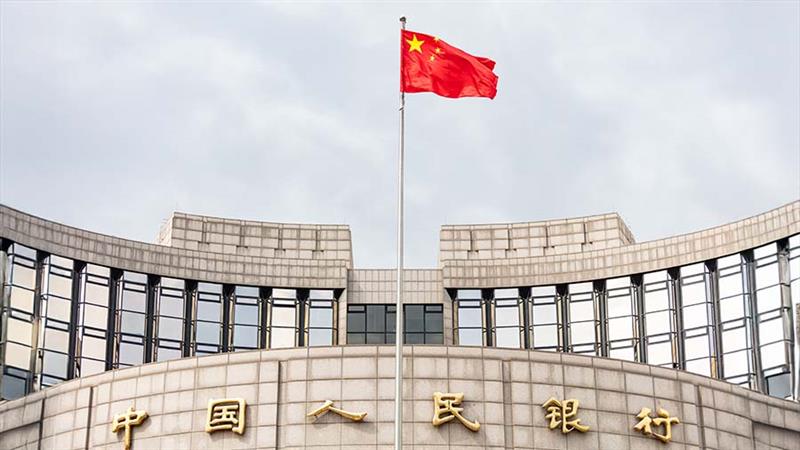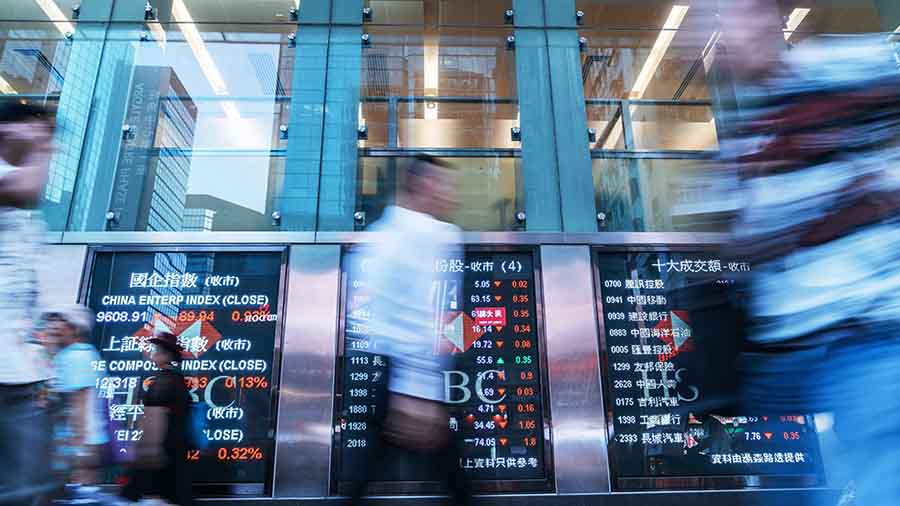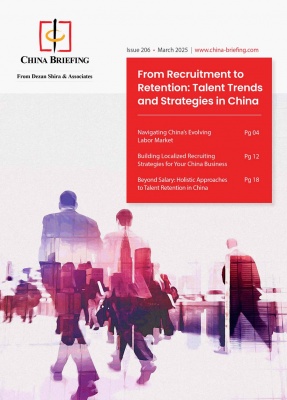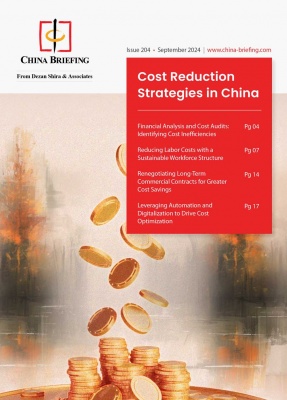Understanding China’s Key Economy Indicators for Q3 2024
- China’s GDP reached RMB 94,974.6 billion (US$13,004.3 billion) in Q3 2024 economy overview, growing by 4.6% year-on-year. Despite challenges in the real estate sector and weak consumer demand, September data indicated a stabilization of economic activity.
- The industrial sector grew by 5.8%, driven by high-tech manufacturing (up 9.1%). The services sector also saw a robust recovery, with a 4.7% increase, particularly in information technology and business services.
- Total imports and exports reached RMB 32.33 trillion (US$4.43 trillion), up by 5.3% year-on-year, with exports rising by 6.2%. However, September saw a slowdown in export growth to 2.4%, raising concerns about future performance amid rising trade tensions.
China’s economy faced significant headwinds throughout the third quarter (Q3) of 2024, yet still managed to avoid a severe downturn thanks to an unexpected rebound in September. While economic indicators in July and August pointed toward a potential contraction—largely driven by a persistent slump in the real estate sector, weak consumer demand, and fiscal strain on local governments—September’s data helped stabilize the situation.
Overall, china’s gross domestic product (GDP) reached RMB 94,974.6 billion (US$13,004.3 billion) in the first three quarters of 2024, up by 4.8 percent year on year on constant price.
By quarter, the GDP for the first quarter grew by 5.3 percent year on year, up by 4.7 percent for the second quarter, and up by 4.6 percent for the third quarter.
Although the quarter’s performance keeps the government’s annual growth target of “around 5 percent” within reach, the broader economic outlook remains challenging. Ongoing structural issues in the housing market, entrenched deflationary pressures, and sluggish consumption have left the leadership under growing pressure to take decisive action. However, policy support has remained cautious, focusing more on managing risks than pursuing aggressive growth measures.
China’s key economic indicators for Q3 2024 at a glance (yearly growth rates):
- GDP: RMB 94,974.6 billion (US$13,004.3 billion); +4.6%
- Value added of industrial enterprises above the designated size*: +5.8%
- Value added of services: +4.7%
- Total retail sales of consumer goods: RMB 35,356.4 billion (US$4,843.3 billion), +3.3%
- Fixed asset investment: +3.4%; excluding real estate: +7.7%
- Total import and export: RMB 32,325.2 billion (US$4,428.1 billion), +5.3%; total exports: RMB 18,614.7 billion (US$2,550.0 billion), +6.2%; Total imports: RMB 13,710.4 billion (US$1,878.1 billion), +4.1%
- CPI: +0.3%
- Unemployment rate: 5.1% (-0.2%)
- Per capita disposable income: RMB 30,941 (US$4,238.5), +5.2% nominal; +4.9% real
*Added value of companies with an annual main business income of over RMB 20 million (US$2.8 million)
Industrial output showcases steady growth amid sector variations
In the first three quarters of 2024, the total value added of industrial enterprises above the designated size grew by 5.8 percent year-on-year. This growth was driven by different sectors:
- Mining: Increased by 2.9 percent
- Manufacturing: Increased by 6.0 percent
- Production and supply of electricity, thermal power, gas, and water: Increased by 6.3 percent
Notably, equipment manufacturing grew by 7.5 percent, while high-tech manufacturing surged by 9.1 percent, surpassing the overall industrial growth by 1.7 percentage points and 3.3 percentage points, respectively.
When examining the performance of industrial enterprises based on ownership types, we see varying growth rates across the categories. State-owned enterprises (SOEs) experienced a growth of 4.3 percent, indicating their continued resilience in the market. Share-holding enterprises performed slightly better, achieving a 6.1 percent increase, which highlights their adaptability and potential for expansion.
In contrast, foreign-funded enterprises, including those from Hong Kong, Macao, and Taiwan, saw a growth of 3.9 percent, reflecting the ongoing challenges in the international business environment. Private enterprises demonstrated strong performance with a 5.5 percent increase, showcasing their vital role in driving innovation and economic activity within the industrial sector.
In terms of specific products, notable growth was observed in:
- New-energy vehicles: Up by 33.8 percent
- Integrated circuits: Up by 26.0 percent
- 3D printing devices: Up by 25.4 percent
In September, the total value added of industrial enterprises above the designated size rose by 5.4 percent year-on-year, which is 0.9 percentage points higher than the previous month and marked a 0.59 percent month-on-month increase. The Manufacturing Purchasing Managers’ Index (PMI) for September was 49.8 percent, showing a slight improvement of 0.7 percentage points compared to August, while the Production and Operation Expectation Index stood at 52.0 percent.
In the first eight months of 2024, total profits for industrial enterprises above the designated size reached RMB 4,652.7 billion (US$654.24 billion), reflecting a modest 0.5 percent year-on-year increase, indicating stability amid the growth in value added.
Services sector continues to recover
In the first eight months of 2024, the value added of the service sector increased by 4.7 percent year-on-year, indicating a solid recovery across various industries. Notably, sectors that showcased the highest growth included:
- Information transmission, software, and IT services: Increased by 11.3 percent
- Leasing and business services: Grew by 10.1 percent
- Transport, storage, and postal services: Saw an increase of 6.3 percent
- Accommodation and catering services: Rose by 5.4 percent
- Wholesale and retail industry: Demonstrated resilience with a 5.7 percent increase
In September, the Index of Services Production recorded a year-on-year increase of 5.1 percent, marking a 0.5 percentage point improvement compared to the previous month. The growth was particularly strong in:
- Information transmission, software, and IT services: Up by 11.4 percent
- Leasing and business services: Increased by 9.7 percent
- Financial intermediation: Grew by 6.5 percent
In Q1-Q3 of 2024, the business revenue of service enterprises above the designated size rose by 7.7 percent year-on-year, reflecting robust demand and operational resilience.
In September, the Business Activity Index for Services stood at 49.9 percent, indicating a slight contraction; however, the Business Activity Expectation Index reached 54.6 percent, suggesting optimism for future growth. Industries such as postal services, telecommunications, broadcasting, and financial services reported high expansion rates, with Business Activity Indices exceeding 55 percent, further underscoring the sector’s positive trajectory.
Retail sales show better-than-expected results
In the first three quarters of 2024, retail sales of consumer goods totaled RMB 35.36 trillion (approximately US$4.93 trillion), reflecting a 3.3 percent year-on-year increase. This growth represents a slight slowdown compared to previous periods, indicating evolving consumer behavior amidst economic conditions.
Merchandise sales constituted the bulk of retail activity, amounting to RMB 31.41 trillion (US$4.42 trillion), which is a 3.0 percent rise year-on-year. Conversely, catering services demonstrated a stronger performance, with revenues increasing by 6.2 percent to reach RMB 3.94 trillion (US$553.92 billion).
Key categories within consumer goods showed particularly noteworthy growth:
- Retail sales of grain, oil, and food: rose by 9.9 percent
- Beverages: increased by 4.5 percent
- Communication equipment sales: grew by 11.9 percent
- Sports and recreational articles: surged by 9.7 percent
Online retail sales also contributed significantly to the overall growth, reaching RMB 10.89 trillion (US$1.53 trillion), a year-on-year increase of 8.6 percent. Online sales of physical goods accounted for RMB 9.07 trillion (US$1.27 trillion), reflecting a 7.9 percent rise and comprising 25.7 percent of total retail sales.
In September alone, total retail sales of consumer goods increased by 3.2 percent year-on-year, a notable improvement of 1.1 percentage points from the previous month. This month also saw a 0.39 percent month-on-month rise. Key categories like household appliances and audio-visual equipment experienced impressive momentum, with retail sales increasing by 20.5 percent, while communication equipment and cultural supplies rose by 12.3 percent and 10.0 percent, respectively. The automotive sector also showed signs of recovery, with retail sales of automobiles and furniture both growing by 0.4 percent.
Overall, the retail sales of services in the first three quarters grew by 6.7 percent year-on-year.
Meanwhile, from January to August 2024, the consumer price index (CPI) rose by 0.3 percent year-on-year, reflecting a slight increase of 0.2 percentage points compared to the first half of the year.
Analyzing price changes by category:
- Food, tobacco, and alcohol: Decreased by 4%
- Clothing: Increased by 5%
- Housing: Rose by 1%
- Daily use articles and services: Up by 7%
- Transportation and communication: Fell by 3%
- Education, culture, and recreation: Increased by 7%
- Medical services and healthcare: Rose by 4%
- Other articles and services: Increased by 4%
Within the food category:
- Fresh fruits: Decreased by 4.7%
- Grains: Increased by 0.2%
- Fresh vegetables: Rose by 3.3%
- Pork: Increased by 5.8%
During the same period, producer prices for industrial products fell by 2.0 percent year-on-year, a decline that was narrowed by 0.1 percentage points compared to the first half of 2024. Specifically, in September, prices decreased by 2.8 percent year-on-year, marking a month-on-month decline of 0.6 percent.
Additionally, the purchasing prices for industrial producers saw a year-on-year drop of 2.1 percent in the first three quarters, with September prices falling by 2.2 percent year-on-year and 0.8 percent month-on-month.
Foreign trade shows strong performance in Q1-Q3 2024
In the first three quarters of 2024, China’s total imports and exports reached RMB 32.33 trillion (US$4.43 trillion), marking a 5.3 percent increase year-on-year. This consistent growth demonstrates China’s resilience in international trade despite global economic uncertainties.
Exports accounted for RMB 18.61 trillion (US$2.55 trillion), rising by 6.2 percent, while imports totaled RMB 13.71 trillion (US$1.88 trillion), up by 4.1 percent. The trade balance stood at RMB 4.9 trillion in surplus, underlining China’s continued export strength. Private enterprises played a pivotal role, with their imports and exports growing by 9.4 percent, now contributing to 55 percent of the total trade value, 2.1 percentage points higher than the same period last year. The Belt and Road Initiative (BRI) further boosted trade relations, as imports and exports with partner countries increased by 6.3 percent, accounting for 47.1 percent of China’s total trade.
China’s exports of mechanical and electrical products grew robustly, up by 8.0 percent, making up 59.3 percent of total exports.
This sustained growth in high-tech sectors and the Belt and Road partnerships positions China favorably in its global trade outlook as it continues to shift toward more value-added industries.
Overall, China’s export performance in 2024 has been a key factor in propping up the country’s economy, especially amid weak domestic demand. In September, however, export growth slowed to 2.4 percent, the weakest level since May, signaling potential challenges ahead.
This dip is attributed to reduced shipments to key markets such as Japan, South Korea, and Taiwan, alongside rising trade tensions with the European Union and the United States, where tariffs have begun to impact trade flows. Despite these challenges, China’s exports still totaled nearly US$304 billion in September, marking one of the highest values on record for the year.
To stay updated on the latest developments in China’s foreign policy and trade relations by visit our China-US Relations Tracker and China-EU Relations Tracker.
Despite these hurdles, China’s exports for September still totaled nearly US$304 billion, one of the highest monthly values for the year. However, the softening growth rate raises concerns for the remainder of 2024 and into 2025, especially as key export categories, such as autos and electronics, show signs of decelerating.
Auto exports grew by 25.7 percent year-on-year in September, slower than previous months, while exports of toys, smartphones, and shoes declined. Trade with major partners like the ASEAN region and Russia remained resilient, but the overall outlook suggests potential challenges ahead, particularly with key markets imposing new tariffs on Chinese goods.
While exports have been a bright spot for China’s economy in 2024, helping to counterbalance sluggish domestic consumption, analysts are cautious about the sustainability of this growth. Heightened trade tensions and a potential cooling of demand in key markets could make it difficult for China to maintain its export momentum going into 2025.
At the same time, the country’s large trade surplus—US$82 billion in September—underscores the ongoing imbalance between weak import growth and resilient export performance. Looking forward, China’s ability to sustain its export-driven growth will depend on navigating these external pressures while boosting domestic economic activity.
How to read China’s key economy indicators for Q3 2024?
China’s economy in Q3 2024 economic data offers several key takeaways about the country’s current growth trajectory and the challenges it faces. While the economy grew by 4.6 percent, slightly above expectations, it marked the slowest pace since early 2023, highlighting the persistent struggle to regain momentum. Despite some positive signals in September—such as retail sales and industrial output exceeding forecasts, the broader picture reveals that structural issues, particularly in the property sector, continue to weigh heavily on overall growth. More targeted, long-term solutions are needed to stabilize these critical sectors.
Following the release of the better-than-expected Q3 economic data, UBS and Goldman Sachs revised up their 2024 real GDP growth forecast for China, from 4.6 percent to 4.8 percent and from 4.7 percent to 4.9 percent, respectively. Nevertheless, to achieve the growth target of “around 5 percent” set during the 2024 Two Sessions, China’s GDP will need to grow by 5 percent to 5.3 percent in Q4, according to analyst. This should be achievable in the wake of the slate of support measures released by the central government since late September.
That said, the market remains cautious, waiting for a clearer and more detailed recovery plan. The reliance on traditional growth drivers like infrastructure and manufacturing is giving way to a more consumption-driven approach, but the impact of this shift will take time to materialize.
Looking forward, the path to sustained recovery will require balancing short-term stimulus with addressing long-standing structural challenges—such as overcapacity, high debt levels, and an aging population.
About Us
China Briefing is one of five regional Asia Briefing publications, supported by Dezan Shira & Associates. For a complimentary subscription to China Briefing’s content products, please click here.
Dezan Shira & Associates assists foreign investors into China and has done so since 1992 through offices in Beijing, Tianjin, Dalian, Qingdao, Shanghai, Hangzhou, Ningbo, Suzhou, Guangzhou, Haikou, Zhongshan, Shenzhen, and Hong Kong. We also have offices in Vietnam, Indonesia, Singapore, United States, Germany, Italy, India, and Dubai (UAE) and partner firms assisting foreign investors in The Philippines, Malaysia, Thailand, Bangladesh, and Australia. For assistance in China, please contact the firm at china@dezshira.com or visit our website at www.dezshira.com.
- Previous Article China’s GDP Grows by 4.8% in the First Three Quarters of 2024
- Next Article China-Belgium Trade Profile: Key Developments and Opportunities




























